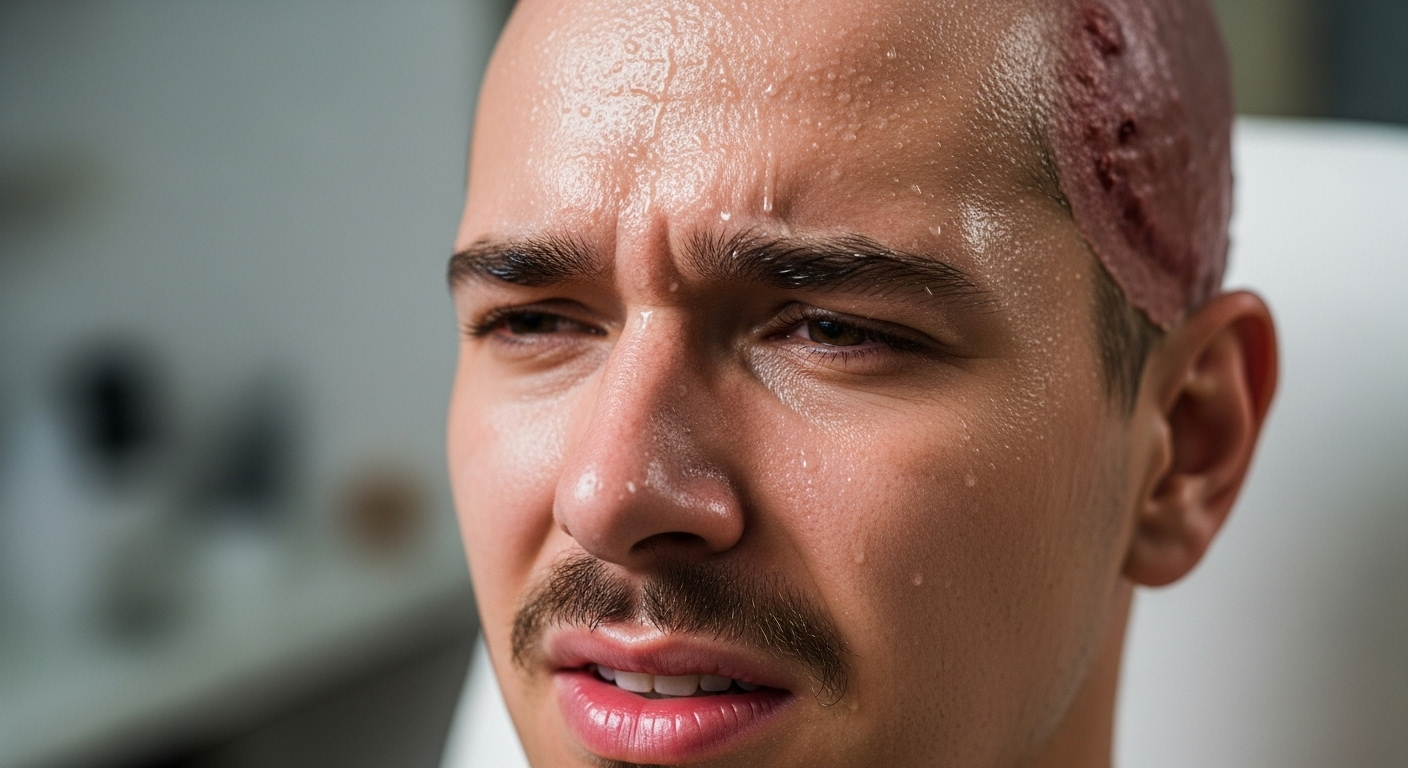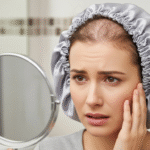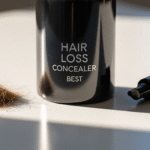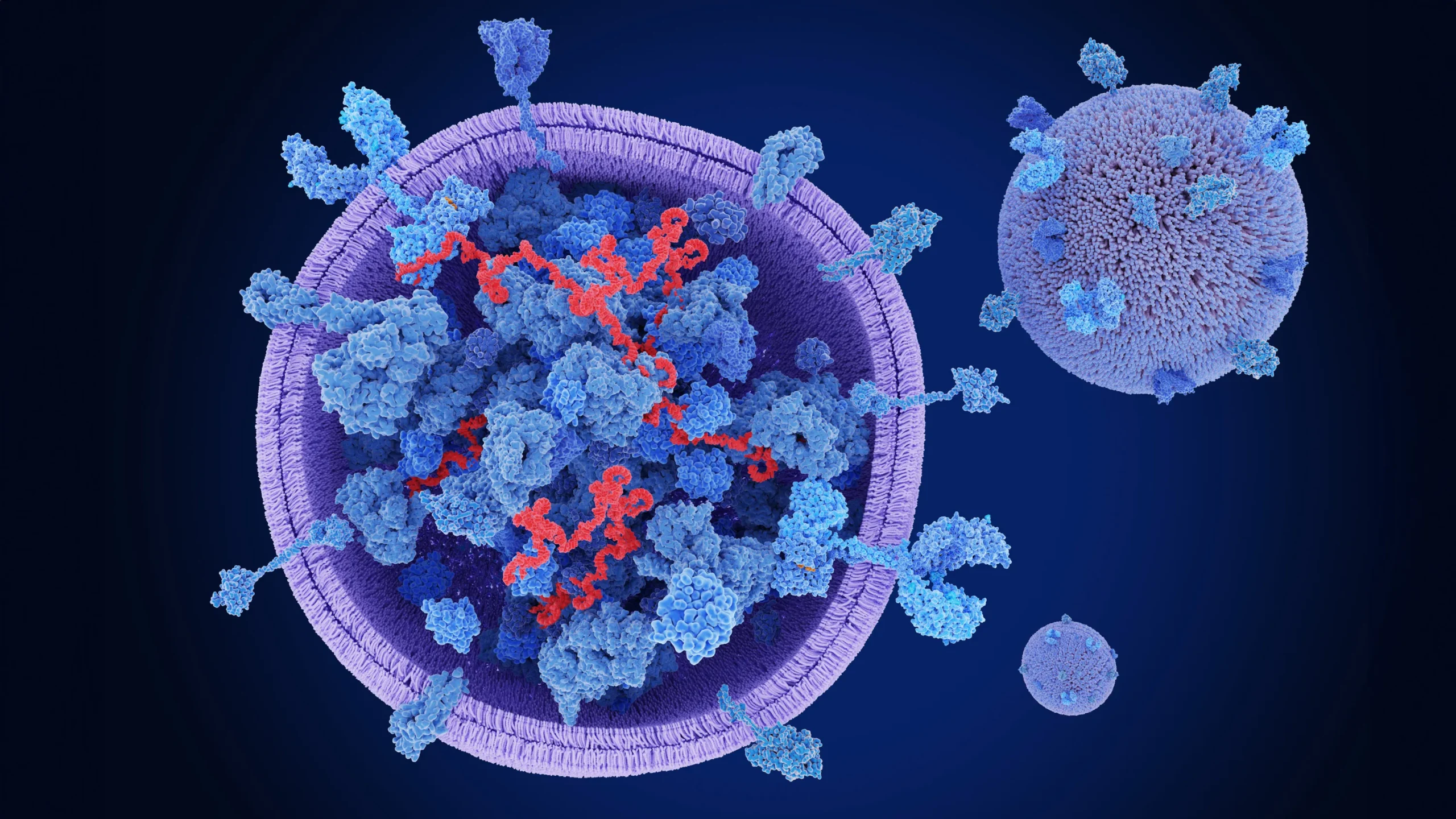Sweat After a Hair Transplant can be a real concern for patients. If you’re planning a hair restoration—such as a FUE hair transplant—you may wonder how soon it’s safe to resume exercise or other sweat-inducing activities. In the first few weeks post-op, it’s crucial to control perspiration to protect your fragile grafts. By following expert …
Sweat After a Hair Transplant can be a real concern for patients. If you’re planning a hair restoration—such as a FUE hair transplant—you may wonder how soon it’s safe to resume exercise or other sweat-inducing activities. In the first few weeks post-op, it’s crucial to control perspiration to protect your fragile grafts.
By following expert recovery guidelines, you can safeguard your new hair follicles, minimize infection risk, and support healthy regrowth. This article explains why sweat is a factor in transplant recovery and outlines a week-by-week plan and practical tips to keep your healing on track.

Why Sweating Matters After Hair Transplant
Sweat itself isn’t harmful – it’s your body’s way to cool down – but after a hair transplant it can introduce complications. Sweat carries moisture and bacteria, which can irritate the healing scalp and even lead to infection. Newly implanted follicles are very delicate: sweat can introduce bacteria to the newly transplanted grafts and disrupt healing. The proteins and salts in sweat can create an environment where bacteria easily grow, potentially compromising fragile grafts.
- Infection risk: Sweat on a fresh transplant can introduce germs that cause redness, swelling or infection around grafts.
- Graft displacement: Excess moisture and friction from perspiration can dislodge newly placed follicles before they secure in place.
- Slower healing: A constantly moist, irritated scalp may heal more slowly. Inflammation from sweat can delay scab shedding and hair growth.
- Discomfort and itching: Sweat can make the transplanted area feel tight or itchy, tempting patients to scratch or rub – a risky move that may disturb grafts.
In short, controlling sweat is an important part of post-transplant care. By understanding the risks, you can take steps to keep your scalp dry and healthy in the crucial first month after surgery.
When to Resume Sweating: A Week-by-Week Guide
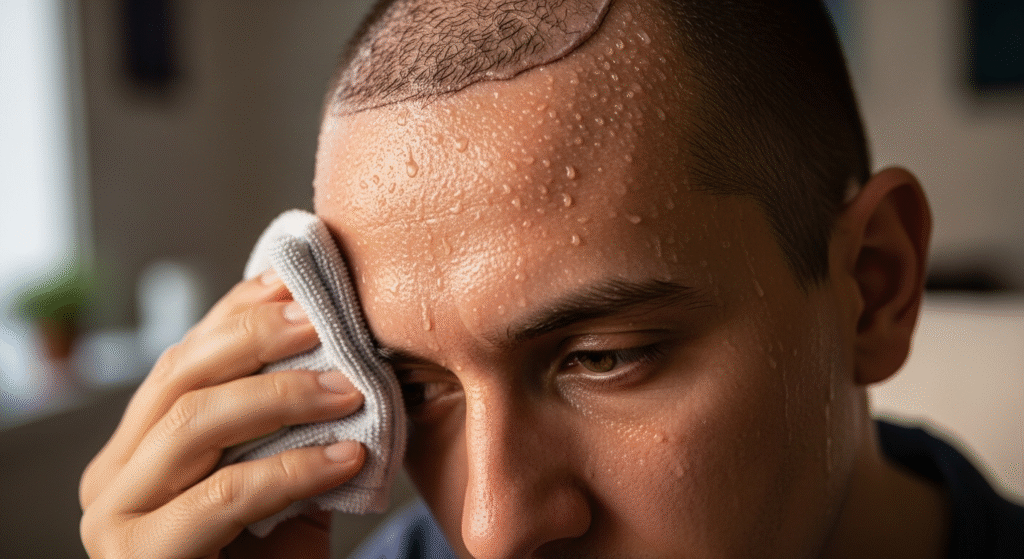
Every clinic may have slightly different protocols, but most specialists agree on a gradual timeline. In general:
Week 1: Avoid All Sweat-Inducing Activity
No exercise, no saunas, no hot showers or steam. Your scalp is extremely vulnerable in the first 7–10 days. Even mild activity that raises body temperature is discouraged. If you do perspire (for example, from warm weather), gently dab sweat away with a clean tissue – do not rub. Keep your head cool and rest as much as possible.
Week 2: Light Movement Only
By week two, the grafts are more secure but still not fully rooted. You may begin gentle walking or simple household activities, but avoid anything strenuous. Continue to avoid gyms, sports, hot tubs or overly warm environments. If you work up a light sweat, cleanse your scalp with the surgeon-approved, mild shampoo provided by your clinic and pat dry softly.
Weeks 3–4: Gradual Return to Exercise
Around days 15–30, most patients’ grafts have taken hold. You can gradually resume low-impact cardio (like slow jogging or easy cycling) a few times per week. Still avoid heavy lifting or high-intensity training. Wear a loose hat or avoid headbands when sweating, and always cleanse the area carefully after workouts. By the end of week 4, many doctors allow resuming most normal activities, but keep showers lukewarm and avoid sun exposure on the scalp.
After 1 Month: Normal Routine with Care
At 4–6 weeks post-op, you can typically return to your usual exercise routine, including heavy workouts. By this point the grafts are stable, though it’s wise to continue basic precautions: keep sweating off your face (to avoid dripping into your hairline), shower promptly after workouts, and use gentle shampoo. Always follow any personalized instructions your surgeon gives.
These stages can vary by individual. Some clinics advise no strenuous exercise for 10–14 days, others may extend light restrictions to three weeks or more. The key is a step-by-step approach: progress slowly and prioritize scalp hygiene.
Tips to Manage Sweat and Support Healing

The good news is that you can minimize sweat-related issues with a few smart habits:
- Stay hydrated: Drinking plenty of water helps regulate body temperature and can reduce excessive sweating. Hydration is also crucial to help avoid scalp dryness that impairs healing.
- Choose loose, breathable clothing: Wear cotton or moisture-wicking fabrics. Avoid tight hats or helmets in the first month. If you must go out in the sun, use a wide, loose hat that doesn’t touch the grafts.
- Use mild, doctor-approved shampoo: Regularly cleanse your scalp gently to remove sweat and dirt. Pat your head dry instead of rubbing.
- Keep cool: Stay in air-conditioned or well-ventilated spaces, especially in the first 2–3 weeks. In hot weather, sit in front of a fan or take cool (not cold) showers to lower body heat.
- Elevate your head when resting: Propping up your head on pillows can reduce scalp swelling and may help lessen night-time sweating.
- Avoid spicy foods and stimulants: Hot peppers, caffeine and alcohol can increase sweating. Eating a cool, balanced diet can indirectly keep your scalp more comfortable.
- Pat, don’t rub: If you do perspire, use a clean cotton pad or sterile compress to gently dab the sweat away. Never scratch or vigorously wipe the transplant area; this can disturb grafts.
These steps, combined with the timeline above, will help you manage perspiration safely. Always listen to your body: if you feel dizzy or overheated, stop activity and cool down immediately.
Do’s and Don’ts for Sweat After a Hair Transplant
- Do: Follow all post-op care instructions from your surgeon. Wash with gentle movements, keep the area clean, and report any redness or discomfort.
- Do: Cover up when outdoors (loose hats/shawls) and stay in the shade during hot days.
- Don’t: Touch or scratch the transplanted area with unwashed hands (bacteria risk).
- Don’t: Engage in contact sports or any activity that risks impact to the scalp for at least 4–6 weeks.
- Don’t: Use sauna, steam bath, or hot tub until 4–6 weeks, and avoid intense cycling or running for the first month.
By balancing gentle care and caution, you’ll give your new hair the best chance to grow.
FAQs:
When can I go back to the gym or start exercising?
Most surgeons recommend waiting about 10–14 days before light workouts, and a full 3–4 weeks before resuming intense exercise. Start slowly – try short walks or stretching first. Always stop if you sweat too much or feel any scalp discomfort.
What happens if I accidentally sweat on the transplant area?
If you notice perspiration on your grafts, gently pat the area dry with a sterile cloth. Avoid letting sweat sit on the scalp. Then lightly rinse or wash the scalp with the recommended mild shampoo. Failing to remove sweat promptly can increase infection risk, so it’s important to clean carefully.
Is sweating different after FUT versus FUE?
The general advice is the same: keep the scalp as dry and clean as possible in the first weeks after any hair transplant. Whether you had a Follicular Unit Excision (FUE) or a strip (FUT) procedure, your grafts are vulnerable to sweat and bacteria initially. However, FUT patients will also have a linear wound to care for. Always follow your surgeon’s specific guidelines.
Should I wear anything on my head to prevent sweating?
Rather than tight caps (which can trap heat), wear a wide-brimmed hat or visor to shade your head without pressing on the scalp. Light, loose clothing and staying in shade are better than tight-fitting hats. If you do wear a cap, make sure it’s clean, loose, and only after the first week post-op, as per your doctor’s advice.
Conclusion
Returning to normal activities after a hair transplant takes patience, but it’s essential for success. By understanding why early sweat can be harmful and following a staged plan of gradually resuming exercise, you protect your investment in new hair. These guidelines reflect best practices from hair restoration specialists: control moisture, keep your scalp clean, and progress your workouts slowly.
Ready to put these tips into action? Book a consultation with Dr. Uzma Irfan, an ISHRS-certified surgeon in Islamabad today, to ensure a smooth and successful recovery after your hair transplant. Their experienced team will tailor post-operative instructions to your needs, helping you achieve the healthiest growth from your new hair.

